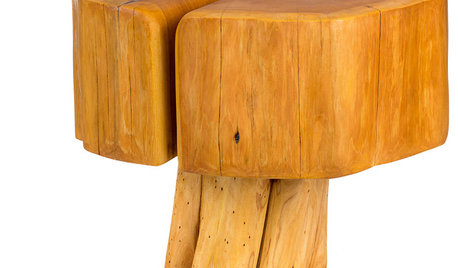Where to buy good soil?
moraleagle
11 years ago
Related Stories

FARM YOUR YARDHow to Get Good Soil for Your Edible Garden
The nutrients in your soil feed the plants that feed you. Here are tips on getting it right — just in time for planting season
Full Story
GARDENING GUIDESThe Poop Scoop: Enrich Your Soil With Good Old Manure
Get over the ick factor already — this natural super-ingredient for soil has so many benefits, you'll wonder why you ever went chemical
Full Story
GARDENING GUIDESHow to Stop Worrying and Start Loving Clay Soil
Clay has many more benefits than you might imagine
Full Story
GARDENING GUIDESGardening Solutions for Heavy Clay Soils
What’s a gardener to do with soil that’s easily compacted and has poor drainage? Find out here
Full Story
GARDENING GUIDESHouzz TV: Make a Worm Bin for Rich Soil and Happy Plants
A worm-powered compost bin that can fit under a sink turns food scraps into a powerful amendment for your garden. Here’s how to make one
Full Story
PRODUCT PICKSGuest Picks: Beautiful Things You Can Feel Good About Buying
Upcycled, ecofriendly or just made responsibly, these home accessories and furniture pieces will keep your conscience clear
Full Story
GARDENING GUIDESGrow a Beautiful Garden in Alkaline Soil
Got alkaline soil? Learn how to manage it and the many beautiful plants that will thrive in this ‘sweet’ soil
Full Story
GARDENING GUIDESHow to Pick a Mulch — and Why Your Soil Wants It
There's more to topdressing than shredded wood. Learn about mulch types, costs and design considerations here
Full Story
GARDENING GUIDESGet the Dirt on Your Garden’s Soil
Understand how your soil supports your plants so you can ensure your garden’s success
Full Story
GARDENING GUIDES5 Prairie Wildflowers That Can Heal Your Soil
Get free, organic soil fertilizer with nitrogen-pumping plants that draw pollinators too
Full Story






moraleagleOriginal Author
Raw_Nature
Related Professionals
Panama City Landscape Architects & Landscape Designers · Garden City Landscape Architects & Landscape Designers · Surprise Landscape Contractors · Barrington Landscape Contractors · Indio Landscape Contractors · Tehachapi Landscape Contractors · Vancouver Landscape Contractors · Wallingford Landscape Contractors · Yukon Landscape Contractors · North Hills Landscape Contractors · Chicago Decks, Patios & Outdoor Enclosures · Hendersonville Decks, Patios & Outdoor Enclosures · Lenexa Decks, Patios & Outdoor Enclosures · Littleton Decks, Patios & Outdoor Enclosures · Pittsburgh Decks, Patios & Outdoor EnclosuresmoraleagleOriginal Author
Raw_Nature
pnbrown
moraleagleOriginal Author
pnbrown
moraleagleOriginal Author
Raw_Nature
pnbrown
nc_crn
moraleagleOriginal Author
Raw_Nature
nc_crn
nc_crn
Raw_Nature
nc_crn
moraleagleOriginal Author
Raw_Nature
moraleagleOriginal Author
Kimmsr
gardengal48 (PNW Z8/9)
JessicaBe
moraleagleOriginal Author
pnbrown
Raw_Nature
moraleagleOriginal Author
pnbrown
pnbrown
nc_crn
nc_crn
pnbrown
ZoysiaSod
moraleagleOriginal Author
toxcrusadr
ZoysiaSod
moraleagleOriginal Author
pnbrown
moraleagleOriginal Author
moraleagleOriginal Author
moraleagleOriginal Author
moraleagleOriginal Author
moraleagleOriginal Author
moraleagleOriginal Author
toxcrusadr
pnbrown
wayne_5 zone 6a Central Indiana
moraleagleOriginal Author
luckygal
Kenny J